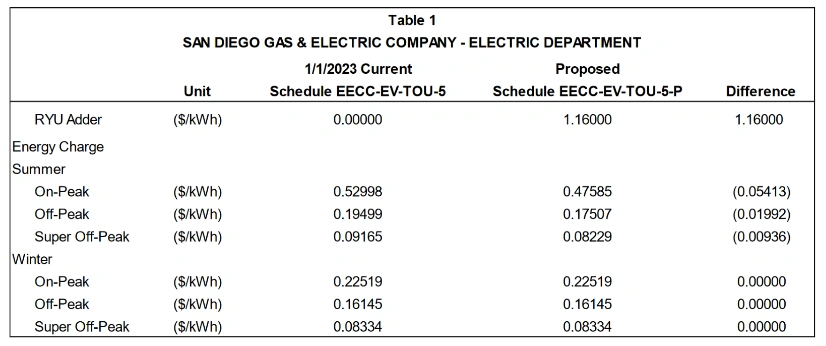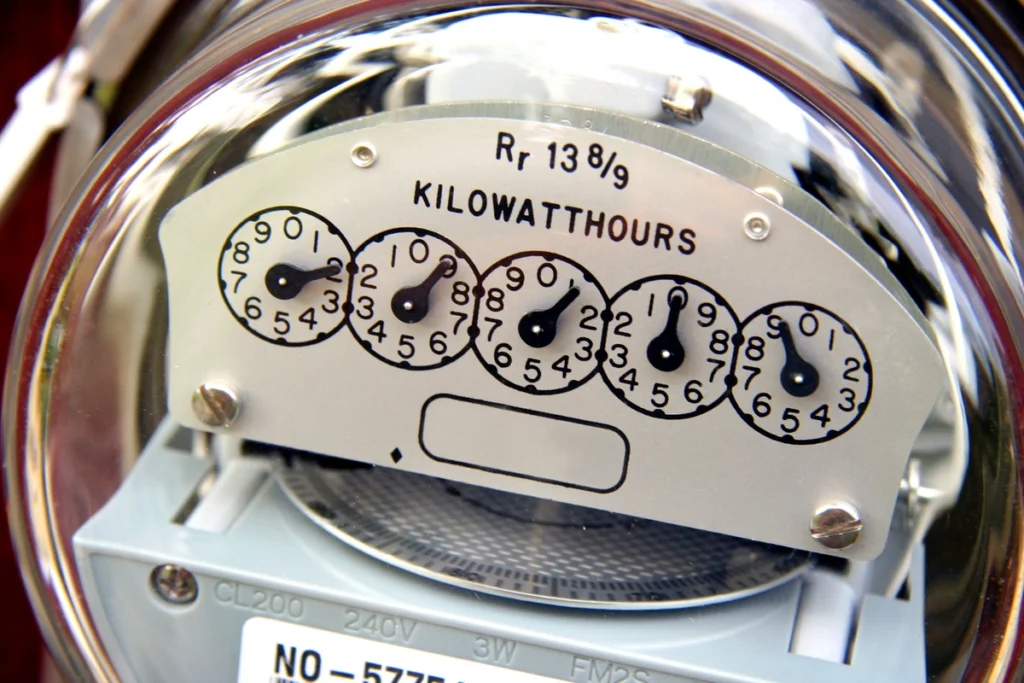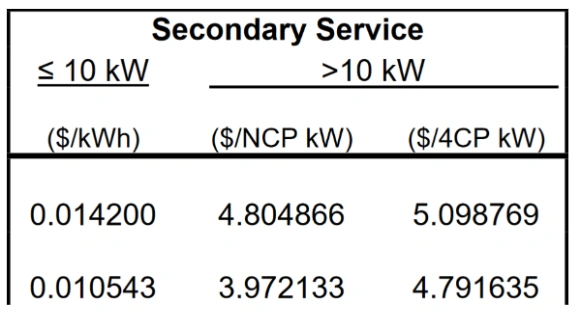IMPORTANT MONTHLY UPDATES & ANNOUNCEMENTS
This month, we look at San Diego Gas & Electric’s new Critical Peak Pricing rate schedule, cover updates to Tucson Electric Power, Pacific Gas & Electric, and Oncor, provide ways to troubleshoot issues with bill totals, and share our Q3 numbers.
San Diego Gas & Electric Adds a New CPP Rate Option (EV-TOU-5-P)
SDG&E implemented a new Critical Peak Pricing (CPP) rate schedule for residential rate schedule EV-TOU-5. SDG&E customers enrolled in the Net Billing Tariff (NBT) are required to take service on rate schedule EV-TOU-5; however, there was no CPP option available prior to this update. The benefit of this new rate option is the significantly reduced commodity costs for summer TOU rates. Customers can take advantage of these reduced rates so long as they reduce their energy consumption during the Reduce Your Usage (RYU) events that are communicated to customers by the utility the day prior. Energy consumption during these events is billed at the RYU adder rate of $1.16 per kWh.

Tucson Electric Power 10% Rate Increase
The Arizona Corporation Commission approved a rate increase of about 10% for Tucson Electric Power (TEP) customers to collect $1.8 billion for investments in grid improvements, wind and solar resources, and low-income assistance programs. These increases are primarily built into the base rates with minor increases to other rate adjustments. Residential customers on the rate schedule TRRES can expect to pay an additional $0.013 per kWh and an extra $2 in monthly customer charges. Our utility rates team tested rate TRRES with a typical Residential load profile and found that such a customer would pay an extra $375 a year following this rate increase. Small general service customers on rate TGSGS fared similarly by paying an additional $0.015 per kWh. For medium general service customers on rate TGMGS, summer and winter demand charges increased by $2.00 and $1.60 per kW respectively, resulting in more favorable opportunities for demand reduction.
Unisource Energy Services, the sister company of TEP, also increased their rates, though not as much as TEP. These updates for both utilities are now available in ETB.
Watch our recent Arizona Utility Territory Rates Webinarhere.
Pacific Gas & Electric Update
The California PUC approved a revenue requirement increase of $364.5 million for PG&E, resulting in an increased system average bundled rate of $0.0047 per kWh or 1.5%. This change increased the average bundled rate for Direct Access and Community Choice Aggregator customers by $0.0045 per kWh or 2.8%. The impact on individual rate schedules may vary. Our utility rates team has updated over 100 of our PG&E and PG&E NEM 3.0 rates to include these new charges for our ETB users.
Oncor’s Transmission Cost Recovery Factor Increase
Customers on Oncor’s “Secondary Service Greater Than 10 kW” rate schedule will be billed nearly an additional dollar for every measured kW in their billing periods. This increase is due to an update in the class allocator as approved by the commission to recover a greater percentage of the cost for the Transmission Cost Recovery Factor (TCRF) from customers on the Secondary Service Greater than 10 kW rate schedule. Specifically, non-coincidental peak (NCP) customers will experience the most significant increase in their TCRF charge. Overall, NCP customers will pay an additional $0.83/kW; 4CP customers will pay an additional $0.31/kW; and lastly, Secondary Service customers with demands ≤ 10 kW will pay an additional $0.0037/kWh for their energy consumption. The following table shows the new charges in the top row compared to the old charges in the bottom row:
Utility Rates September 2023 FAQ:
Why are ETB’s totals different from my bill totals?
There are many reasons why the bill totals that ETB calculates may differ from the totals that your bills show. Here is a list of five reasons and explanations that can help troubleshoot issues you may experience with differences in bill totals:
-
The bills are old.
Our team is dedicated to ensuring the most recent rate information is available for our users. If you select an ETB rate with an effective date more recent than your bill date, then there will likely be a difference in totals because ETB is using more recent charges to calculate energy consumption. This is especially the case with fuel-related charges, as they tend to fluctuate each month and can cause significant variances in bill totals.
-
The selected ETB rate is old and needs to be updated.
If your bills are more recent than an ETB rate’s effective date, the rate may need to be updated to include more recent charges. Contact our rates team at utilityraterequest@energytoolbase.com, and we’d be happy to update the rate for you.
-
Incorrect energy inputs in the Energy Use Profile.
Double-check that the kWh and kW inputs are correct. Adding or subtracting a single digit can result in a difference of hundreds or thousands of dollars. Also, verify that the inputs are in the proper months and seasons, as some rates have very different charges for each season.
-
Taxes are not being accounted for.
We tend to exclude taxes from our rates because tax rates can vary, but ETB users can add taxes in the Energy Use Profile or within the rate.
-
Incorrect attribute selection.
It’s important to pay attention to the “Rate Schedule Details” section of the Energy Use Profile to ensure that the attribute selections match your bills. For example, a secondary voltage customer may be billed much differently than a transmission voltage customer.
ETB’s 3rd Quarter in Review:
Our utility rates team enjoys sharing our progress with ETB users because much of it comes from user requests! Every utility and rate we add signifies expanding opportunities for solar, and we think that is pretty neat! We quantify our Q3 successes below:
- New rates added: 280
- New utilities added: 26
- 12 different states
- 6 different countries
- Canada
- Guatemala
- Peru
- South Africa
- Sweden
- Taiwan




